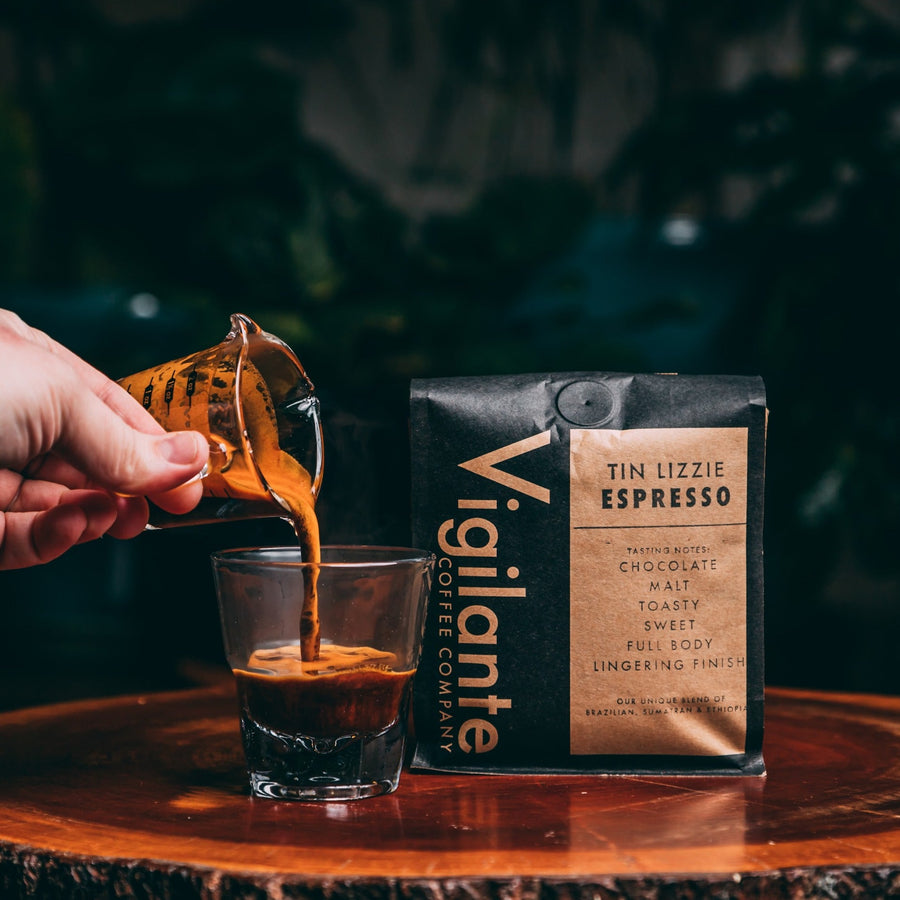Coffee Beans 101: Everything You Need to Learn About Coffee and Blended Coffee Beans
When it comes to coffee, comprehending the nuances of coffee and mixed beans can change your daily cup. From the growing process to roasting strategies, every step plays a duty in your coffee experience.
Understanding Coffee Beans: Varieties and types
When diving right into the globe of coffee, understanding the types and selections of coffee beans is important for every single lover. You'll mainly encounter two main species: Arabica and Robusta. Arabica beans are understood for their smooth, intricate tastes and lower high levels of caffeine content, making them a favorite amongst coffee enthusiasts. On the various other hand, Robusta beans load a punch with a stronger, more bitter preference and greater caffeine levels, often made use of in espresso blends.
Within these species, you'll discover various regional varieties, each bringing special attributes. Ethiopian Yirgacheffe provides intense flower notes, while Colombian beans provide a well-balanced taste account. As you discover, bear in mind to take note of handling approaches like washed or natural, as they can substantially affect the last preference. By familiarizing on your own with these beans and their tastes, you'll raise your coffee experience and make more informed options in your brewing journey.
The Expanding Refine: From Seed to Bean
When you check out the journey of coffee, everything begins with seed choice methods that establish the structure for high quality. From there, farming and gathering play necessary roles in guaranteeing the beans thrive. Finally, processing approaches transform those collected cherries into the coffee beans you like.
Seed Option Techniques
Picking the ideal seeds is important for creating premium coffee beans, as it lays the foundation for the whole growing procedure. You must start by choosing seeds from credible resources that focus on top quality and genetic variety. Try to find ranges known to flourish in your specific climate and soil conditions. Take note of the seed's age and storage space conditions, as fresh seeds have a tendency to germinate better. When possible, opt for natural seeds to reduce direct exposure to damaging chemicals. Take into consideration the condition resistance of various varieties, as this can significantly influence your return. Do not be reluctant to consult with regional farmers or professionals to get understandings right into the best seed options for your area. This knowledge will boost your coffee-growing experience.
Cultivation and Harvesting
As you support your coffee seeds right into flourishing plants, comprehending the cultivation and harvesting process is crucial for achieving the finest flavor and high quality. Start by growing your seeds in well-draining dirt, preferably in a shaded location to secure them from direct sunlight. As your plants expand, preserve constant moisture, and bear in mind their demand for nutrients. Prune routinely to advertise air movement and healthy and balanced development.
Hand-picking is often the finest approach to assure just the ripest cherries are chosen. Timing is crucial; collecting as well late or as well very early can affect the flavor account of your beans.

Handling Approaches Described
As soon as you have actually gathered your coffee cherries, the following necessary action is refining them to change those vibrant fruits right into the beans you'll make. In the dry process, you spread out the cherries out in the sunlight to completely dry, allowing the fruit to ferment and impart one-of-a-kind tastes to the beans. Recognizing these techniques is key to enjoying your coffee experience.
Roasting Methods: How Taste Is Established
When it comes to roasting coffee beans, understanding roast degrees is key to revealing their distinct flavors. Each roasting strategy impacts the fragrance and improves the taste development procedure, giving you a richer coffee experience. Let's check out just how these elements collaborated to boost your day-to-day brew.
Roast Levels Clarified
Roast levels play a vital role in forming the taste account of your coffee. By understanding these levels, you can much better select a coffee that matches your preference choices. Experiment with various roasts to uncover which one resonates with you, boosting your general coffee experience and enjoyment.
Influence on Scent
The roast degree not only affects the taste of your coffee yet likewise greatly influences its aroma. When you select a light roast, you'll often observe intense, flower notes that can make your coffee scent fresh and vivid. As the beans darken, the scent changes; a medium roast draws out extra balanced, caramelized fragrances, while a dark roast has a tendency to feature bold, smoky undertones. Each toasting strategy launches various volatile compounds, forming how your coffee scents. Furthermore, the quality of the beans plays a vital role; fresh baked coffee launches a lot more aromatic oils, enhancing that attracting aroma. So, focus on the roast level-- it's vital to disclosing the full fragrant experience of your mixture.
Taste Development Process
As you explore the flavor development process, you'll find that toasting strategies play an important role in shaping the taste profile of your coffee. The roasting temperature and time straight influence the acidity, sweetness, and resentment of the beans. Light roasts retain more of the bean's original flavors, highlighting flower and fruity notes.
Coffee vs. Blended Coffee: Trick Distinctions
Espresso and blended coffee each deal unique experiences that satisfy different tastes and preferences. Coffee is a concentrated coffee made by compeling warm water with finely-ground coffee beans, leading to an abundant, strong taste and a creamy layer of crema on the top. It's frequently enjoyed as a shot or used as a base for beverages like cappuccinos and cappucinos.
On the other hand, blended coffee incorporates numerous beans from different areas, developing a more well balanced flavor profile. You'll usually find blends that highlight body, acidity, or sweet taste, making them versatile for various developing methods. While espresso concentrates on strength, blended coffee might provide a wider variety of tastes that can change with each sip.
Inevitably, your choice between espresso and mixed coffee boils down to your personal choice. Whether you hunger for a leisurely cup or a quick shock, both choices have something tasty to offer.

Developing Methods: Unlocking the Perfect Mug
When it concerns brewing coffee, finding the right technique can transform your experience and raise your mug. Each developing technique has its distinct charm and can greatly influence your coffee's taste and fragrance. As an example, utilizing a French press allows you to enjoy a robust and abundant mixture, while a pour-over method supplies a tidy, intense cup with distinct tastes.
If you prefer coffee, purchasing a quality machine can aid you understand the art of pulling shots. Additionally, for convenience, a single-serve shuck system uses rate without compromising preference.
Don't fail to remember about chilly brew, which provides a smooth, less acidic coffee suitable for warm days. Try out different approaches to find what reverberates with your palate. Each developing strategy opens up a new globe of possibilities, so take description the time to explore and find your excellent mug. Delighted brewing!
Sampling Notes: Recognizing Taste Profiles
Just how can you really value your coffee if you don't understand what flavors to look for? Sampling notes are your guide to comprehending the complex world of coffee. Some coffees might leave a chocolatey or caramel aftertaste, while others might have an intense, clean coating.
Take into consideration the body of the coffee, too; is it resource airy and light or thick and syrupy? Don't neglect level of acidity; an intense level of acidity can include sprightliness, while a reduced level of acidity could give a smoother experience. By recognizing these taste profiles, you'll strengthen your link with each cup, making coffee sampling a wonderful trip of discovery.

Tips for Picking and Storage Coffee Beans
Saving and choosing coffee beans appropriately can significantly improve your brewing experience. Begin by picking high-quality beans that match your taste - SOE.
As soon as you have your beans, keep them in a closed container to stop exposure to dampness, air, and light. A dark, trendy place functions best, so stay clear of keeping them in the refrigerator or freezer, as this can introduce dampness. Only grind the amount you require to preserve freshness; entire beans preserve flavor longer than pre-ground coffee.
Lastly, attempt to utilize your beans within two to 4 weeks after opening for peak taste. Adhering to these tips will guarantee your coffee remains satisfying and delicious, elevating your day-to-day brew to brand-new heights.
Regularly Asked Questions
Just How Long Do Coffee Beans Remain Fresh After Roasting?
Coffee beans stay fresh for about two weeks after toasting - SOE. You should keep them in an impermeable container, far from light and moisture. After that, their flavor and aroma begin to diminish significantly

Can I Mix Different Coffee Bean Varieties?
Absolutely, you can mix various coffee bean varieties! Try out blends can improve flavors and produce an unique preference account. Simply make certain to balance the toughness and attributes of each variety for the ideal outcomes.
What Is the Perfect Grind Dimension for Coffee?
For espresso, you'll desire a great grind dimension, regarding the appearance of salt. This allows suitable extraction, resulting in a rich, flavorful shot. Experiment a little bit to go to website find what fits your preference best!
Exactly How Does Altitude Affect Coffee Bean Flavor?
Elevation influences coffee bean flavor by affecting the development price and chemical structure. Greater altitudes cause slower growth, which enhances acidity and intricacy, giving your coffee a dynamic and special preference you won't neglect.
Exist Decaffeinated Versions of Coffee Beans?
Yes, there are decaffeinated variations of coffee beans. You can appreciate an abundant espresso flavor without the high levels of caffeine kick. Just search for "decaf" blends at your regional coffeehouse or specialized shop.
Coffee Beans 101: Whatever You Need to Know About Coffee and Blended Coffee Beans.
When diving into the world of coffee, understanding the types and varieties of coffee beans is vital for every fanatic.When it comes to toasting coffee beans, comprehending roast levels is key to disclosing their special tastes. Coffee is a focused coffee made by compeling hot water through finely-ground coffee beans, resulting in a rich, vibrant flavor and a luscious layer of crema on top.On the various other hand, mixed coffee integrates numerous beans from various areas, developing a much more well balanced flavor account.